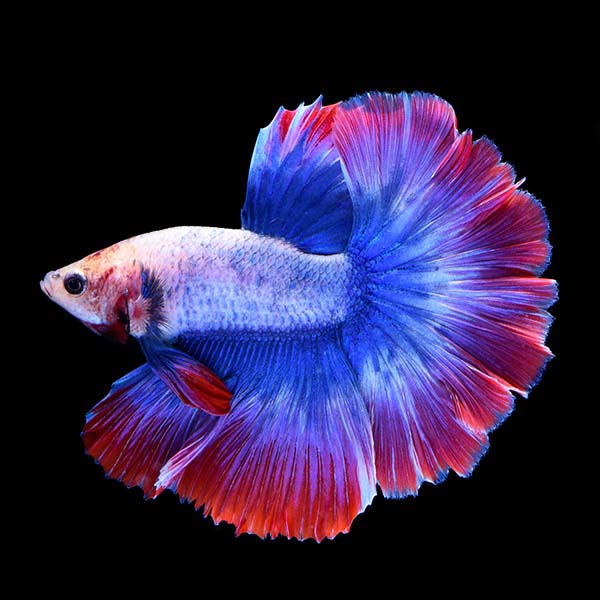Exactly How to Introduce Betta Fish to a Community Tank Securely
Exactly How to Introduce Betta Fish to a Community Tank Securely
Blog Article
Reproducing Betta Fish: a Comprehensive Step-By-Step Guide to Efficiently Raising Baby Bettas From Eggs to Adulthood
Breeding Betta fish is a precise venture that calls for mindful planning and execution to ensure the effective growth of fry from eggs to mature fish. As the male Betta diligently constructs a bubble nest and guards the valuable eggs, the succeeding phases of treatment and transition need interest to information and expertise of best practices.

Picking Reproduction Pairs
When beginning on the journey of breeding Betta fish, picking the ideal breeding pairs is essential to attaining preferable characteristics and a healthy family tree - betta fish. The primary step in this procedure is to recognize the particular traits you desire to improve or preserve, such as shade, fin type, and body shape. It is important to select genetically diverse sets to avoid inbreeding, which can lead to wellness issues and unfavorable characteristics
Review prospective reproducing candidates meticulously. A healthy male Betta must display lively colors, an active disposition, and well-formed fins, while the woman ought to also show vivid coloration and a rounded stubborn belly, suggesting preparedness for spawning. Observing the temperament of both fish is essential, as aggressive or excessively reluctant individuals might not reproduce efficiently.
Documents of lineage is similarly vital. Keeping records of the moms and dad fish's origins can help you track genetic qualities and potential issues. Furthermore, speak with reliable breeders or on-line sources for assistance on choosing suitable sets. Inevitably, investing time in the option process will dramatically boost the possibility of creating strong, lively spawn that meet your reproduction objectives (betta fish).
:strip_icc()/siamese-fighting-fish-bettas-1378308-hero-f459084da1414308accde7e21001906c.jpg)
Preparing the Breeding Container
Developing an ideal breeding setting is a crucial step after choosing appropriate pairs for Betta fish. The reproduction storage tank should be especially created to offer convenience and promote the natural reproduction habits of the fish. Beginning with a storage tank size of at the very least 10 gallons to make sure appropriate area for both the man and women Bettas.
Maintain a mild filtering system to maintain the water clean while avoiding strong currents that can stress the fish. Furthermore, an air rock can be included in provide oxygenation without interfering with the water surface area way too much.
Temperature level guideline is vital; goal for a stable array of 78-82 ° F(25-28 ° C) using a dependable heating system. The pH level need to be preserved between 6.5 and 7.5, and routine water adjustments are required to ensure high water high quality.
Include floating plants or spawning sponges to develop concealing spots for the lady, while also motivating bubble nest structure by the man - betta fish. Guarantee the container is free from sharp designs and any kind of possible hazards, as the welfare of the fish ought to constantly be focused on throughout this critical phase of reproduction.
The Reproduction Refine
Generally, the breeding process for Betta fish includes a series of unique and visible behaviors that indicate readiness for reproduction. The male Betta begins by building a bubble nest at the water's surface, which functions as a site for the fed eggs. This nest is vital, as it provides a secure setting for the eggs till they hatch out.
As soon as the nest is developed, the man will certainly present courtship actions, such as flaring his fins and showing vivid shades to bring in the woman. The woman, upon picking up the man's preparedness, will respond by displaying upright red stripes along her body, signifying her receptiveness.
When the women methods, the male engages in a more helpful hints breeding dancing, usually bring about a welcome called the "spawning." During this welcome, the female launches her eggs, which the male feeds quickly. The fertilized eggs then fall to the bubble nest, where the male thoroughly accumulates and returns them to the nest. Following this, the male presumes responsibility for securing the nest and guaranteeing the safety of the eggs until they hatch out, usually within 24-36 hours. This phase is crucial in the breeding procedure, laying the structure for successful fry advancement.
Taking Care Of Betta Fry
Caring for Betta fry requires cautious focus to their environment and nourishment to make certain healthy and balanced growth and development. After hatching, Betta fry are exceptionally tiny and prone, demanding a secure and tidy habitat.
Feeding Betta fry is just as crucial. Feed them little quantities numerous times a day, being cautious not to overfeed, which can lead to water quality problems.
Transitioning to Adult Bettas
As Betta fry mature, transitioning them to adult Bettas is an essential stage that calls for careful administration of their setting and social interactions. This procedure normally starts when the fry reach around 6 weeks of age, whereupon they can be gradually presented to a more structured living setting.
To promote this change, it is crucial to make certain that the water parameters-- such as temperature, pH, and ammonia levels-- are ideal and steady. Grown-up Betta fish grow in warm water (around 78-80 ° F) with a pH of 6.5 to 7.5. Progressively accustom the fry to these problems to minimize stress.
Social interactions are another essential element; man Bettas are notoriously territorial and aggressive. As a result, it is suggested to different men into individual storage tanks as they mature. Female Bettas can be housed with each other, but treatment top article ought to be taken to keep track of for indicators of aggressiveness.
In addition, dietary modifications should be made as the fry expand. Include premium pellets and live foods to sustain their development and health and wellness. By taking care of these variables effectively, you can promote an effective shift to adulthood for your Betta fish.

Conclusion
Effective reproduction of Betta fish calls for careful interest to information throughout the entire process, from selecting genetically diverse pairs to offering optimal treatment for fry. Additionally, a balanced diet browse this site and steady adjustment to grown-up settings are vital for the growth and development of Betta fish.
Report this page